Introduction
A cam design editor is used to design the movements for a cam plate. A cam design editor is integrated into TwinCAT, and it can be found in the System Manager at NC Configuration, under the Tables item.
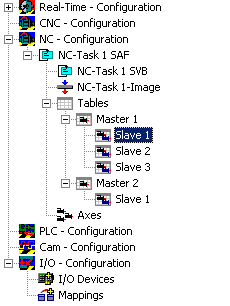
It is possible here to insert additional masters, and to enter corresponding slaves under them (right hand mouse button). If you then click the master in the structure tree, the property pages can be used to set the properties not only of the master, but also of the associated slaves.
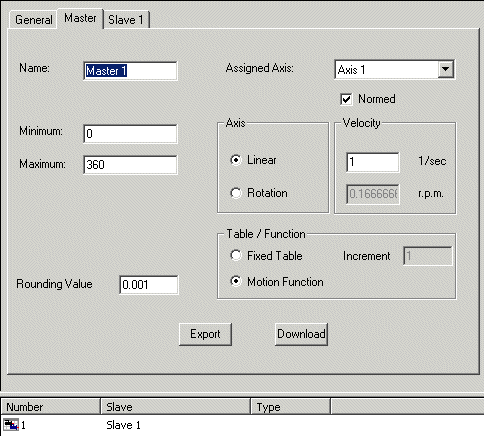
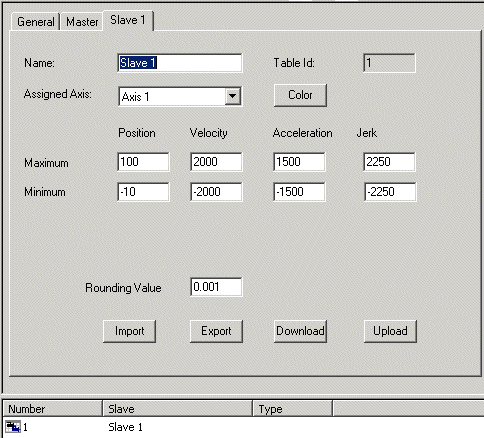
The general procedure for developing a design of a cam is based on VDI (Verein Deutscher Ingenieure) Guideline 2143. The rough design of the movement - the movement plan - defines the starting and end points of the movement section. The editor, however, does not make a distinction between the movement sketch and the movement diagram containing the detailed description of the movement.
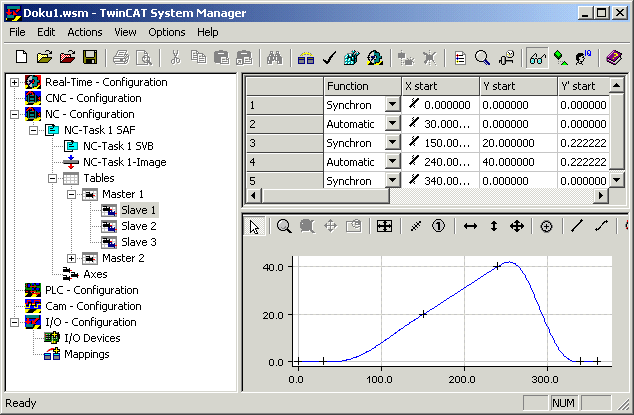
The user's interface to the cam design editor is graphic. Following interactive graphic entry of the points in the graphic window, the co-ordinates of the points are displayed in the table window above it. New points can only be inserted in the graph, and it is only possible to delete existing points via the graph. The properties of the points - the co-ordinate values or their derivatives - can also be interactively manipulated in the table window.
Not just the position, but also the velocity, acceleration and jerk can be displayed in the graphic area.
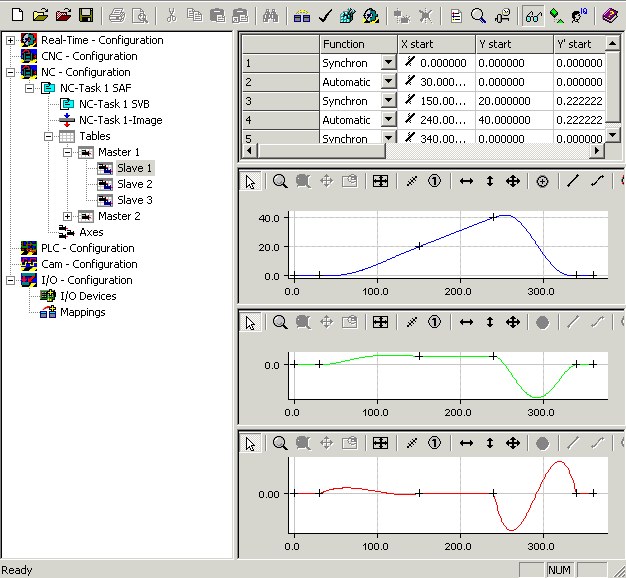
The mode of the display can be changed by a right mouse click in the graphic window, which opens the following menu:
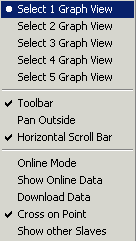
Thus a separate Graphic Window is opened for each derivative.
The cam design editor is a flexible tool that provides the user with optimum support and only the minimum of restrictions. Therefore, responsibility for the choice of parameters lies with the user. The user, for instance, should carefully check whether the starting and end points correspond exactly to requirements. On the other hand, the user is offered the best possible assistance for checking velocity, acceleration and jerk through the graphic display facilities.
With all these options, however, the user must remember that it is physics that sets the limits to the possible movement.